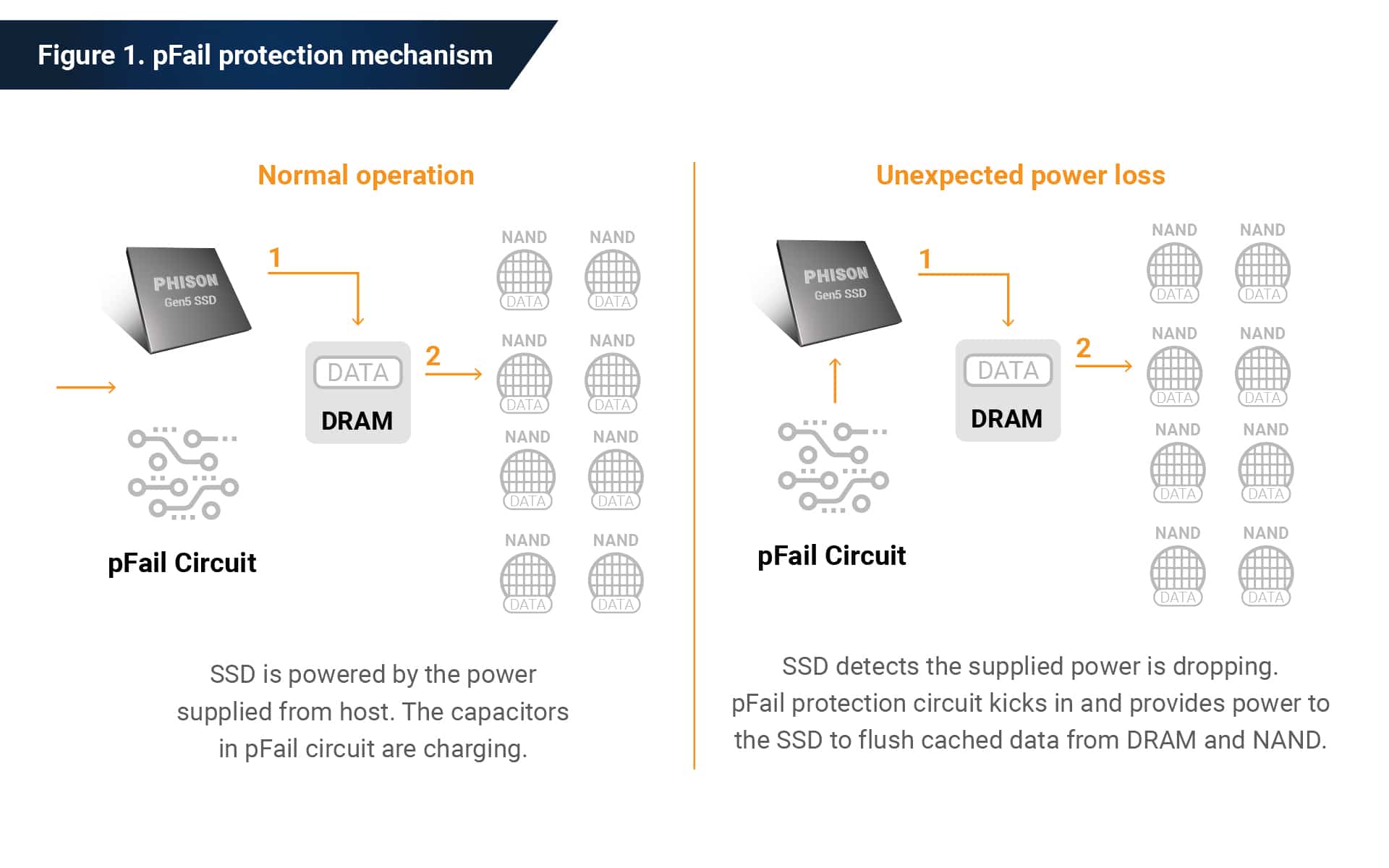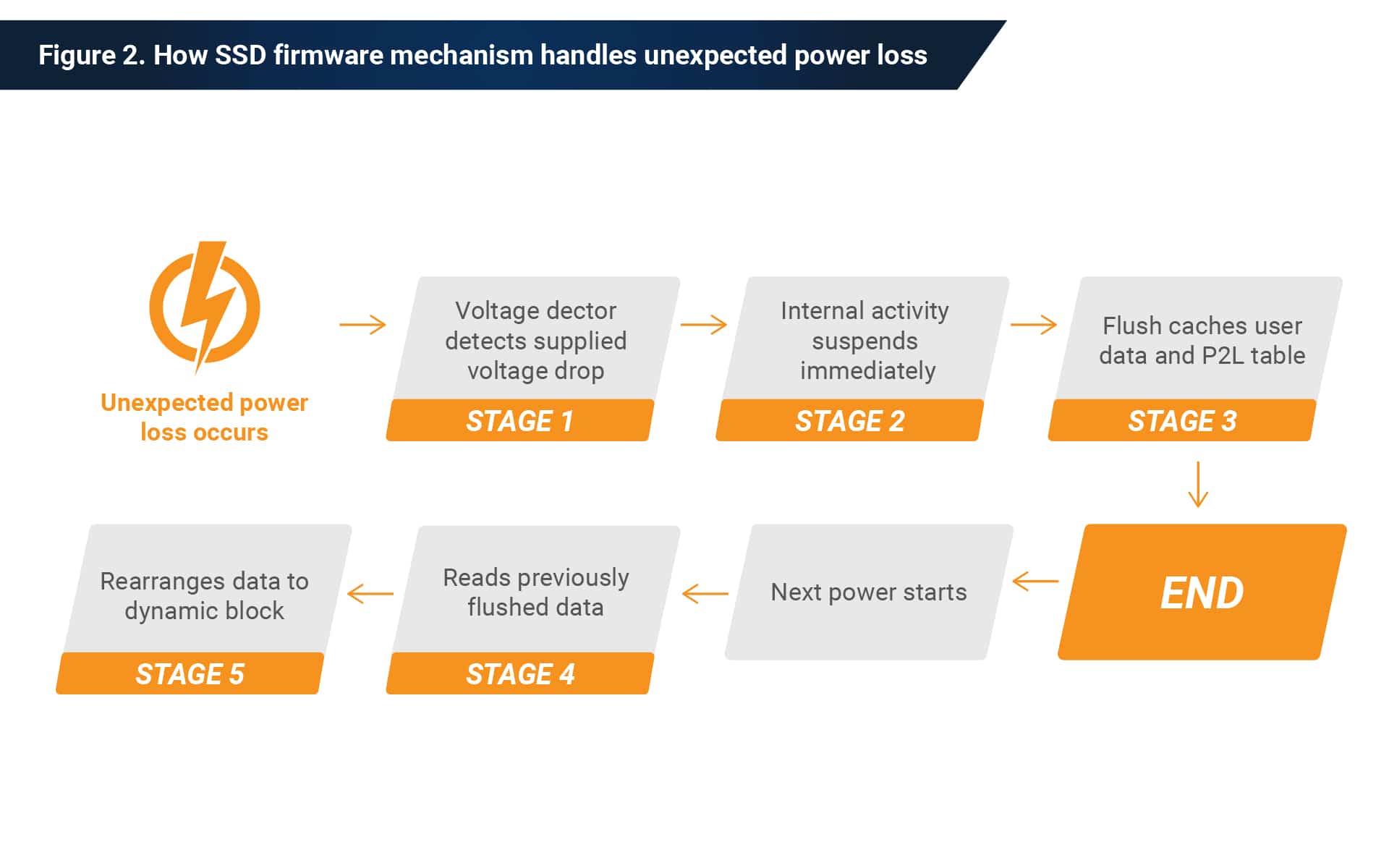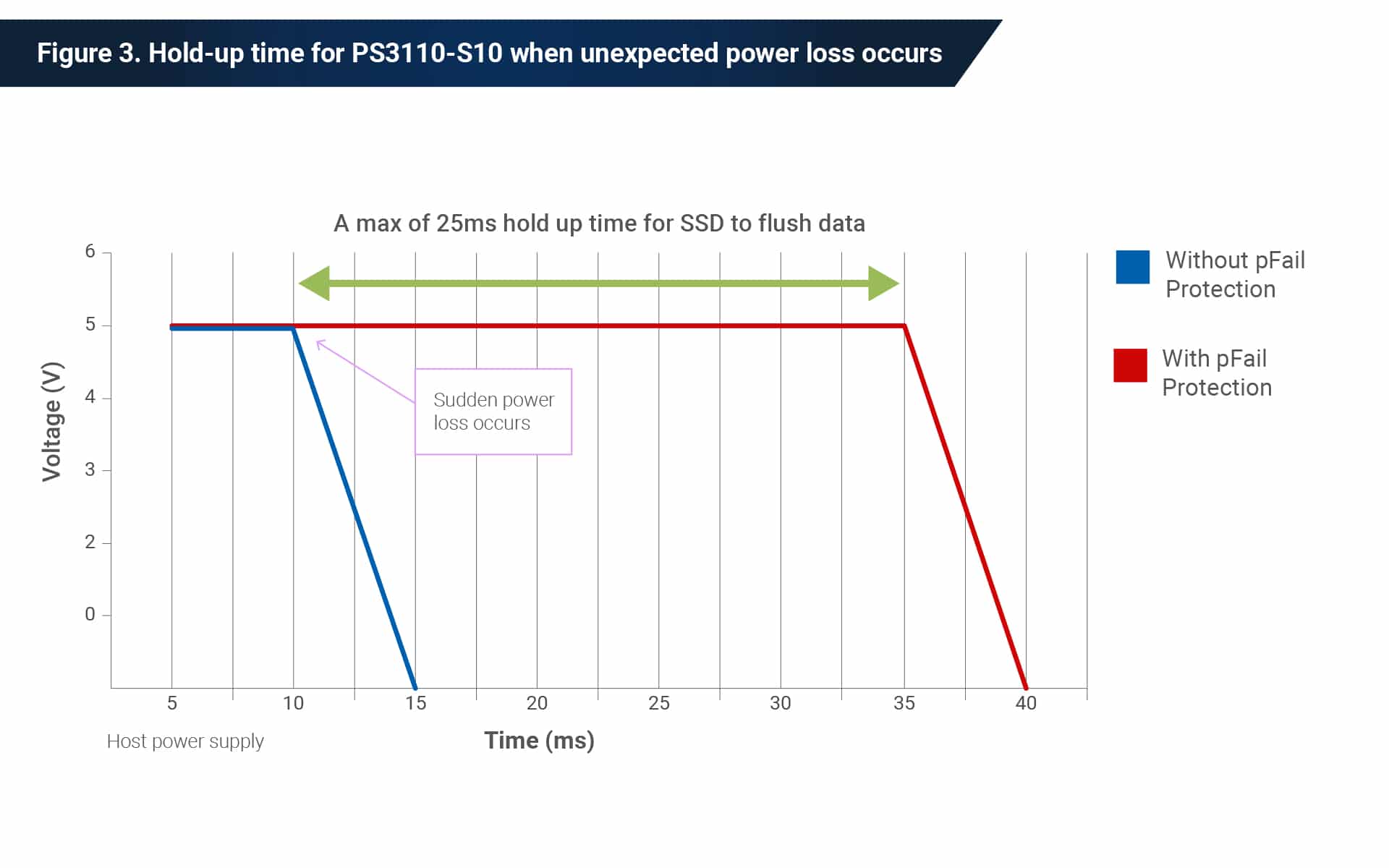In the modern data storage world, more users are choosing SSDs over traditional HDDs. The benefits include higher performance, no moving parts, and lower failure rates. However, due to the characteristic of SSDs, there are also weaknesses. For example, if an unexpected power loss occurs, data can be lost or corrupted when using SSDs. Phison SSDs, however, can handle unexpected power loss and overcome the risk of losing a user’s valuable data.
How SSDs work
Inside an SSD, there are three major components: NAND Flash memory, DRAM, and an SSD controller. When an SSD receives data from the host, the data is first processed by the SSD controller. The data is then sent to the more volatile DRAM, which acts as a data buffering cache that optimizes the incoming data and improves performance. Finally, the data is written to the NAND.
The limitation with DRAM
Because DRAM cannot store data without power is a volatile memory, and data is only temporarily stored inside the DRAM buffer. Worst still, the DRAM temporarily holds other information, including the firmware management table and system table. In a typical power-down scenario, the controller will manage and properly save all the DRAM data to NAND before powering down. However, when unexpected power loss occurs, without a power-loss protection mechanism, the DRAM data will be lost or corrupted.
The solution
Phison SSDs include pFail protection circuitry with capacitor components on the board design to prevent data loss or corruption from unexpected power loss events. These capacitors act as a UPS (Uninterruptible Power Supply) for the SSDs. The capacitors are charged upon powering up. When unexpected power loss occurs, the capacitors can provide additional power-down time for the controller to copy all the critical information (cached user data and P2L table) in the DRAM to NAND to guarantee data integrity and prevent loss of data.
How does Phison power loss protection work?
In the event of an unexpected power drop, SSD firmware detects the power drop incident through GPIO (General Purpose Input/Out) Pin, and all the internal activities of the SSD are suspended, including garbage collection and wear leveling. Next, the cached user data and P2L table are quickly flushed to a temporarily assigned block for emergency data backup.
On the next power-up of the SSD, the drive will read out the flushed data from the block during the initial power-up stage and rearrange the data to a dynamic block where it can be properly stored.
How Phison tests its fail protection circuitry
To verify the power-loss protection function, Phison uses the OakGate testing system to create the test script and perform the power-loss protection verification process to ensure recovered data works as expected. In this way, Phison can ensure their SSDs will perform as expected when confronted with real-world unexpected power-down scenarios.
How Phison pFail SSD compares to non-pFail SSDs
Figure 3 shows an example is based on a 512GB 2.5″ SSD using Phison PS3110-S10 SATA III controller with Toshiba 15nm MLC NAND. The graph shows how much more hold-up time the pFail circuit can provide versus one without pFail protection.
In this example, Phison’s pFail protection mechanism can provide a maximum of 25ms hold-up time to flush the cached data stored in the DRAM buffer to preserve data integrity and prevent data loss. *Note the voltage hold-up time will be different depending on the drive configuration.
Conclusion
As flash-based storage drives become more and more popular, SSDs will provide much higher performance and lower failure rates than traditional hard drives. Now, with Phison’s Power Loss Protection feature, SSDs are the perfect solution for all kinds of applications, including client-based, consumer, data center, and embedded applications.












